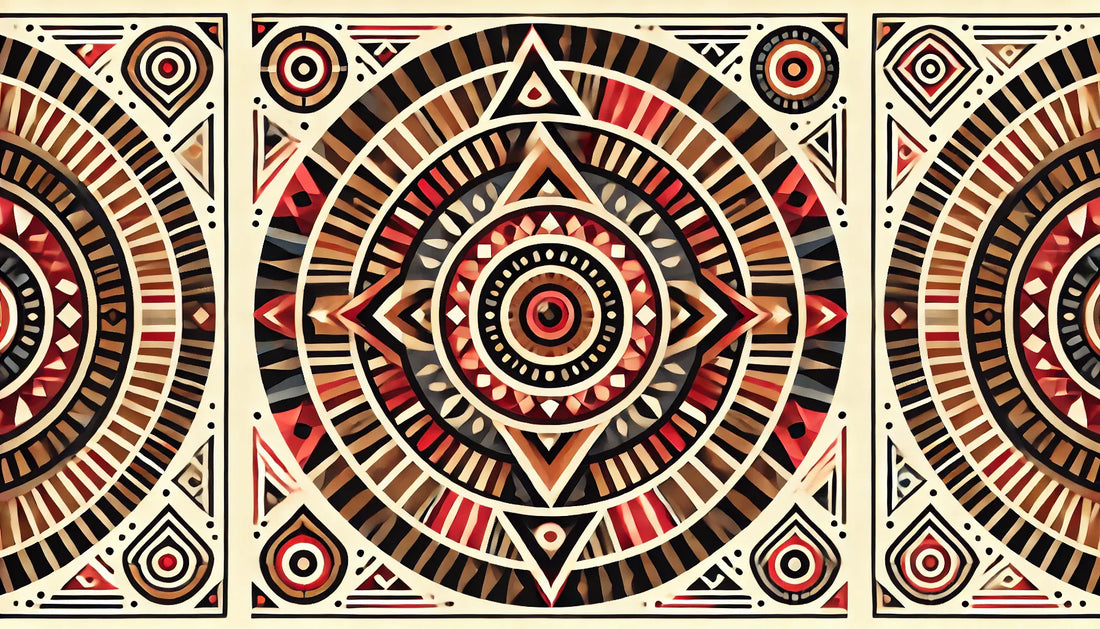
Creating Tribal Patterns with AI: Honoring Heritage Through Digital Art Prompts
Share
Tribal patterns are a rich expression of culture, identity, and history. They tell stories, embody traditions, and carry the legacy of countless generations. As the world embraces the transformative power of artificial intelligence (AI) in creative fields, it becomes an invaluable tool for reimagining these traditional motifs in new and respectful ways.
In this blog, we’ll explore how AI can help create tribal patterns, the importance of honoring the cultural roots of these designs, and tips for crafting effective digital art prompts that respect and celebrate heritage.
The Cultural Significance of Tribal Patterns
Tribal patterns are more than just decorative motifs; they are visual narratives deeply rooted in cultural heritage. Across continents, communities have used these patterns to communicate spiritual beliefs, social status, and historical events. From the intricate weavings of African textiles to the symbolic motifs of Native American beadwork, each design carries profound meaning.
However, as globalization and digital tools become integral to art, the challenge is to integrate technology without diluting the authenticity of these patterns. Here, AI offers a unique opportunity: it allows for the creation and reinterpretation of tribal designs while ensuring the preservation of their cultural essence.
AI in Tribal Pattern Design: The How and Why
AI-powered tools like DALL·E, MidJourney, and DeepDream are transforming the way artists and designers approach pattern creation. By using carefully crafted prompts, these tools can generate intricate designs inspired by traditional tribal aesthetics.
Why Use AI for Tribal Patterns?
-
Speed and Efficiency
AI can generate dozens of iterations in seconds, saving hours of manual design work. This allows artists to focus on refining the best outputs. -
Exploration of Variations
With AI, you can experiment with color palettes, shapes, and styles to find fresh takes on traditional patterns while staying true to their essence. -
Accessibility for All Artists
Even those with limited design skills can explore complex tribal motifs using AI, democratizing creativity. -
Preservation Through Innovation
By digitizing and reimagining traditional patterns, AI can contribute to preserving cultural heritage in modern forms, ensuring their relevance in a digital age.
Crafting AI Prompts for Tribal Patterns
The key to generating culturally respectful and visually stunning tribal patterns lies in crafting thoughtful AI prompts. Here are some tips:
1. Research is Essential
Before creating prompts, delve into the history and meaning of the tribal patterns you want to explore. Learn about their origins, cultural significance, and visual elements to ensure your designs honor the culture.
2. Be Descriptive
AI responds best to detailed prompts. Include information about the shapes, symmetry, color schemes, and artistic styles you want to emulate. For instance:
“Generate a symmetrical tribal pattern inspired by the geometric shapes of Maasai beadwork, featuring bold red, blue, and black hues on a white background.”
3. Specify Medium and Style
Clarify whether you’re looking for patterns in a traditional medium (e.g., textile, beadwork) or modern adaptations (e.g., digital abstract art).
Example:
“Create a digital illustration of a tribal pattern inspired by Native American pottery, incorporating earthy tones and natural motifs like feathers and waves.”
4. Respect Cultural Context
Avoid generic terms like "tribal" without specifying a culture or region. Focus on a specific heritage to produce authentic and respectful designs.
5. Iterate and Refine
AI-generated art often requires multiple iterations. Refine your prompts based on the results to achieve a pattern that aligns with your vision.
Honoring Heritage While Innovating
Using AI to create tribal patterns is a powerful way to celebrate heritage, but it comes with responsibility. To avoid cultural appropriation, consider the following:
-
Collaborate with Communities
Work with cultural representatives or artists who are part of the heritage you’re drawing inspiration from. Their input can ensure your designs are respectful and meaningful. -
Give Credit Where It’s Due
Acknowledge the cultural origins of your designs in your projects and descriptions. -
Avoid Misrepresentation
Ensure the patterns and their applications align with their intended cultural significance. -
Educate Your Audience
Use your platform to share the history and significance of the patterns you create. This fosters appreciation rather than appropriation.
AI Tools for Creating Tribal Patterns
Here are some of the best tools for generating tribal-inspired patterns:
1. DALL·E
OpenAI’s DALL·E can generate detailed and intricate patterns based on well-crafted prompts. Its flexibility in interpreting visual concepts makes it ideal for creating tribal designs.
2. MidJourney
Known for its artistic flair, MidJourney excels in producing high-quality, stylized patterns. Artists often use it to experiment with unique interpretations of traditional motifs.
3. Canva + AI Plugins
For those who prefer a user-friendly interface, Canva offers AI-powered design tools that can help create repeatable patterns for textiles or digital use.
4. Procreate with AI Brushes
Combine Procreate’s customizability with AI-generated ideas for a seamless workflow that blends manual artistry with AI innovation.
Creative Prompts to Get You Started
Here are some sample prompts to inspire your AI-generated tribal designs:
-
“Design a repeating tribal pattern inspired by Polynesian tattoos, featuring flowing lines and natural motifs like waves and turtles, in a monochromatic palette.”
-
“Create a bold geometric tribal pattern inspired by Aztec art, with vibrant yellow, red, and green tones, suitable for a modern digital wallpaper.”
-
“Generate a minimalist tribal-inspired border design based on Inuit carvings, featuring abstract shapes and earthy tones.”
Applications of AI-Generated Tribal Patterns
AI-generated tribal designs can be applied in various creative fields:
- Fashion Design: Integrate patterns into clothing and accessories.
- Interior Decor: Use patterns for wallpapers, rugs, or upholstery.
- Digital Media: Create website backgrounds, social media posts, or branding elements.
- Art Installations: Reimagine traditional patterns for large-scale digital or physical installations.
Conclusion
The fusion of AI and traditional art opens up a world of possibilities for celebrating heritage while embracing innovation. By approaching tribal patterns with respect, research, and creativity, artists can honor cultural legacies and reimagine them for a modern audience.


